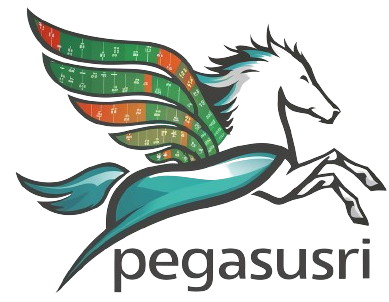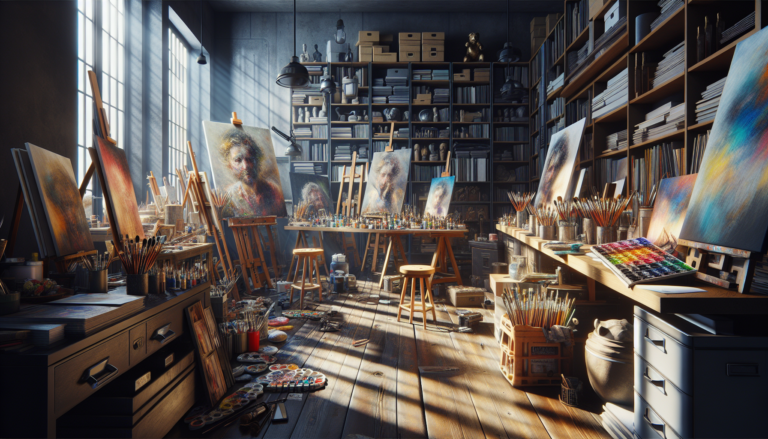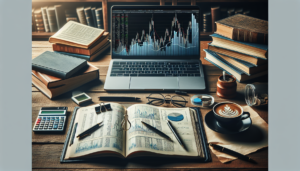Investing in art has been gaining mainstream acceptance as a viable opportunity for diversifying portfolios and securing stable returns. The global art market reached an impressive $65.1 billion in 2021, a 29% increase from the previous year, indicating the growing interest and potential in this alternative asset class. This comprehensive guide will walk you through the essentials of art investment, providing insights into market dynamics, strategies, and modern options for beginners looking to enter this exciting world.
Introduction to Art Investment
Why Invest in Art?
Art is a unique asset that not only provides financial returns but also holds cultural value and emotional appeal. As a non-liquid asset, art offers stable value over time and acts as a hedge against inflation, making it an attractive option for diversifying investment portfolios. By investing in art, you can potentially minimize risk and enjoy returns that are independent of traditional markets such as stocks and bonds.
Moreover, owning art can enhance the cultural value of your estate, providing a meaningful legacy for future generations. Art collections can be passed down through generations, appreciating in value and significance over time. Investing in art allows you to support artists, contribute to the preservation of cultural heritage, and potentially reap financial rewards in the long run.
Understanding the Art Market
To successfully invest in art, it is crucial to understand the dynamics of the art market. Research and expert guidance play a vital role in navigating this complex landscape, as the value of artworks can be influenced by various factors such as the artist’s reputation, market trends, and historical significance.
The art market is divided into two main segments: the primary market and the secondary market. The primary market involves direct purchases from artists or galleries, while the secondary market encompasses auctions and resales. Each market has its own characteristics and opportunities, requiring investors to stay informed and adapt their strategies accordingly.
Types of Art Investments
Investing in Emerging Artists
Investing in emerging artists can be a high-risk, high-reward strategy. These artists are early in their careers and have yet to establish a strong reputation in the art world. By identifying promising talent and acquiring their works at lower prices, investors have the potential to realize significant returns if the artist gains recognition and their value increases over time.
However, investing in emerging artists requires careful research and a keen eye for potential. It is essential to stay informed about art world trends, attend exhibitions, and seek advice from art professionals to make informed decisions.
Investing in Established Artists
Investing in established artists offers a lower-risk approach compared to emerging artists. These artists have already proven their value in the art market, with a track record of consistent sales and critical acclaim. While the entry prices for their works may be higher, investing in established artists provides a more stable and predictable return on investment.
When considering established artists, it is important to research their career trajectory, exhibition history, and the demand for their works in the market. Consulting with art advisors and staying updated on market trends can help you make well-informed decisions.
Investing in Blue Chip Artists
Blue chip artists represent the most renowned and sought-after names in the art world. These artists have achieved widespread recognition and command high prices in the market. Investing in blue chip artists is often considered a safe and prestigious option, as their works are likely to retain or increase in value over time.
However, investing in blue chip artists also comes with a higher price tag and may require a substantial initial investment. It is crucial to authenticate the provenance and condition of the artwork, as well as consider factors such as rarity and historical significance.
How to Start Investing in Art
Setting Investment Goals and Budget
Before diving into art investment, it is essential to establish clear goals and a budget. Determine your investment objectives, whether it is long-term appreciation, portfolio diversification, or a combination of financial and personal fulfillment. Set a realistic budget based on your financial capacity and risk tolerance, taking into account the costs associated with acquiring, insuring, and maintaining artworks.
Research and Expert Guidance
Conducting thorough research is key to making informed decisions in the art market. Educate yourself about art history, market trends, and the factors that influence the value of artworks. Attend art fairs, exhibitions, and auctions to gain exposure and insights into the market.
Seeking expert guidance from art advisors can be invaluable in navigating the complexities of the art world. Art advisors can provide personalized recommendations based on your investment goals, budget, and preferences. They can also assist with due diligence, authentication, and the logistics of acquiring and maintaining artworks.
Buying from Primary and Secondary Markets
As mentioned earlier, the art market consists of the primary and secondary markets. The primary market involves purchasing artworks directly from artists or galleries, often at lower prices but with higher risk. Building relationships with artists and galleries can provide access to exclusive opportunities and a deeper understanding of the artist’s vision and potential.
The secondary market, on the other hand, involves buying artworks that have been previously owned. Auction houses and online platforms are common avenues for secondary market transactions. Buying from the secondary market allows you to acquire works by established artists and assess their market value based on previous sales.
Modern Art Investment Options
Investing in Digital Art and NFTs
The rise of digital art and non-fungible tokens (NFTs) has opened up new avenues for art investment. Digital art refers to artworks created or presented in a digital format, which can be owned, invested in, or traded. NFTs provide a way to authenticate and establish ownership of digital artworks, creating a new market for collectors and investors.
However, the digital art and NFT market is highly volatile and requires careful consideration. It is important to understand the technology behind NFTs and the risks associated with investing in cryptocurrency. Conducting research on the artists, platforms, and market trends is crucial to make informed decisions in this emerging space.
Fractional shares and art investment funds provide more accessible options for beginners and younger investors. Platforms like Masterworks allow individuals to invest in shares of high-value artworks, lowering the entry barrier and enabling diversification.
Art investment funds pool together capital from multiple investors to acquire a collection of artworks. These funds are managed by professional art advisors who make investment decisions on behalf of the investors. Investing in art funds can provide exposure to a diverse range of artworks and benefit from the expertise of experienced professionals.
Risks and Challenges in Art Investment
Illiquidity and High Costs
One of the main challenges in art investment is the illiquidity of the asset. Unlike stocks or bonds, artworks cannot be easily sold or converted into cash. The process of finding a buyer and negotiating a sale can be time-consuming and may not always align with your desired timing or price.
Moreover, investing in art involves high costs beyond the initial purchase price. Expenses such as insurance, storage, maintenance, and transportation can add up over time. It is important to factor in these costs when considering the potential returns on your investment.
Counterfeits and Lack of Information
The art market is not immune to fraud and counterfeiting. Authenticating artworks and verifying their provenance is crucial to avoid falling victim to counterfeit pieces. Working with reputable art advisors, galleries, and auction houses can help mitigate this risk.
Another challenge in the art market is the lack of transparency and readily available information. Unlike public companies, artists and artworks do not have standardized financial reports or performance metrics. Relying on expert opinions, market trends, and personal research is essential to make informed investment decisions.
Conclusion
Investing in art can be a rewarding and enriching experience, offering the potential for financial returns and personal fulfillment. By understanding the art market, setting clear goals, and seeking expert guidance, beginners can navigate this exciting world with confidence.
Whether you choose to invest in emerging artists, established names, or explore modern options like digital art and fractional shares, the key is to approach art investment with a long-term perspective and a passion for the artworks themselves.
Remember to conduct thorough research, stay informed about market trends, and seek advice from trusted professionals. With patience, knowledge, and a well-diversified portfolio, art investment can be a valuable addition to your overall financial strategy.
As you embark on your art investment journey, embrace the beauty, cultural significance, and potential rewards that come with owning and appreciating art. Let your passion guide you, and enjoy the process of building a meaningful collection that reflects your values and vision.
See also:






